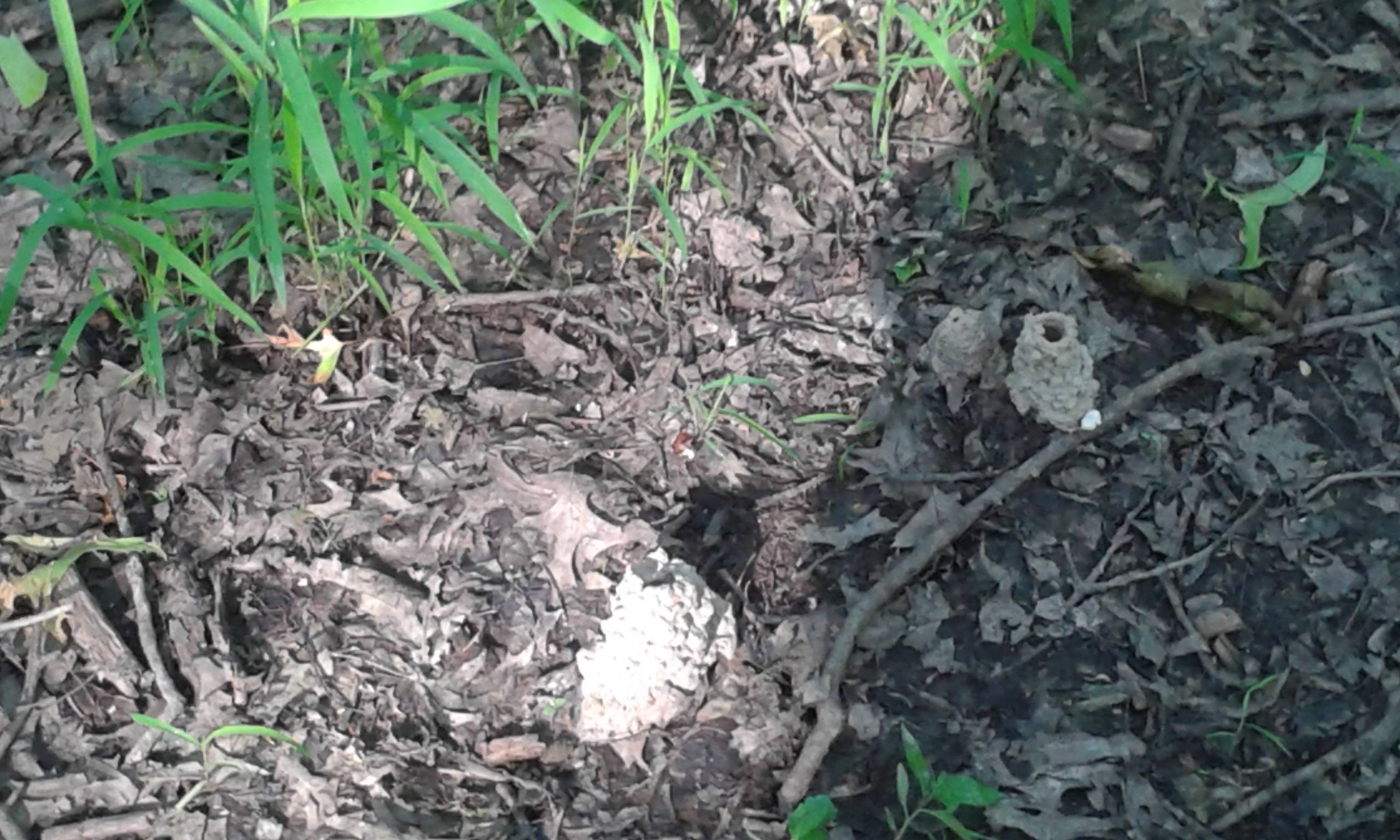I found these structures while hiking in Wayne Township, Clermont County, Ohio, USA, on June 7, 2016, at approximately N 39° 12.5 W 084° 04.0. I only had my phone, and not a real camera, so sorry for the poor focus. Each mound is about 4 to 6 cm in diameter and no more than 20 cm tall. Surroundings were a deciduous forest and the ground was quite moist.
I initially assumed they were ordinary termites, but when I read up on it, I found that North American termites don't build mounds. So then I thought possibly some form of wasp or bee, but again I could not find a photo whose appearance matches these. So this has left me very curious, what built them?

